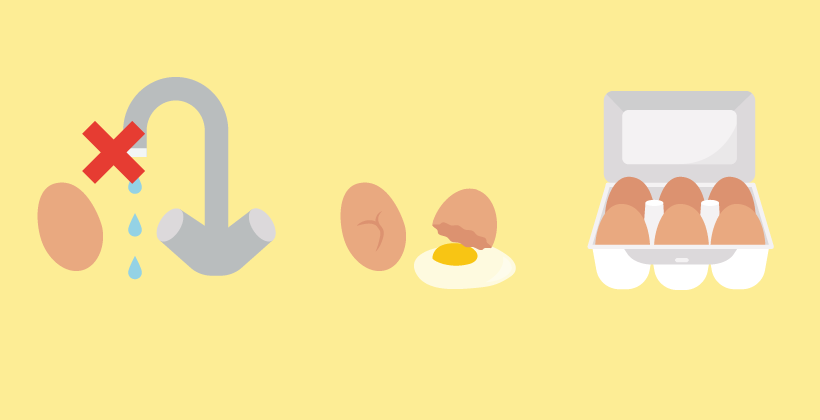What is Glucose-Fructose Syrup? (Q&A)
Last Updated : 05 April 2018Glucose-fructose syrup is a sweetening ingredient widely used in a variety of food products. Read our Q&As for more information about it, how it is made and its impact on our health.
What are glucose and fructose?
Glucose is a simple sugar, a so-called monosaccharide, because it is made up of just one sugar unit. It is found naturally in many foods, and it is used by our bodies as a source of energy to carry out daily activities.
Fructose is also a simple sugar, often referred to as a fruit sugar. Fructose, as the name suggest, is found in fruits (such as oranges and apples), berries, some root vegetables (such as beets, sweet potatoes, parsnips, and onions) and honey. Fructose is the sweetest of all naturally occurring sugars.
Glucose and fructose bound together in equal amounts create another type of sugar – sucrose – a disaccharide commonly known as table sugar.
What is Glucose-Fructose Syrup (GFS)?
GFS is a sweet liquid made of glucose and fructose. Unlike sucrose, where 50% of glucose and 50% of fructose are linked together, GFS can have a varying ratio of the two simple sugars, meaning that some extra, unbound glucose or fructose molecules are present. The fructose content in GFS can range from 5% to over 50%.
How is GFS made?
GFS is typically made from starch. The source of starch depends on the local availability of the raw product used for extraction. Historically, maize was a preferred choice, while in recent years wheat became a popular source for the GFS production. Starch is a chain of glucose molecules, and the first step in GFS production involves freeing those glucose units. The linked glucose molecules in starch are cut down (hydrolysed) into free glucose molecules. Then, with the use of enzymes, some of the glucose is changed into fructose in a process called isomerisation.
Check our infographic on how GFS is produced
What is GFS used for?
The main reasons for using GFS in foods and drinks are its sweetness and the ability to blend nicely with other ingredients. Interestingly, it can be also used in place of additives for food preservation (an effect also observed with table sugar). This helps to fulfil the needs of consumers when they desire products without additives. Apart from better stability, GFS can also improve the texture, prevent crystallisation, and help to achieve desired consistency (crispy versus moist).
Are GFS, Isoglucose and High Fructose Corn Syrup (HFCS) the same thing?
There is a lot of confusion around the terms glucose-fructose syrup, isoglucose and high fructose corn syrup which are often used interchangeably.
GFS may be called differently depending on the country and the fructose content. In Europe, due to ‘isomerisation’ process, GFS with more than 10% fructose is called isoglucose. In turn, when the fructose content exceeds 50%, the name changes to Fructose-Glucose Syrup to reflect the higher content of fructose.
In the United States, the syrup is produced from a maize starch, usually with either 42% or 55% fructose content, hence it is called High Fructose Corn Syrup.
Is GFS used in many food products?
In Europe, sucrose is still the main caloric sweetener used in the production of food and drinks. The production of GFS in the EU was regulated by the European Sugar Regime and was limited to 5% of total sugar production. However, in October 2017 the regime ended, and the production of GFS is estimated to increase from 0,7 to 2,3 million tonnes a year. As a consequence, in the future, GFS may replace sucrose in certain products, mainly in liquid or semi-solid foods, such as drinks and ice cream. It will continue being used for confectionery, jams and preserves, baked goods, cereal products, dairy products, condiments and canned and packed goods.
In the US, GFS (or HFCS) is more commonly used than in Europe, typically in soft drinks where the HFCS with fructose content of at least 42% is used.
What is the nutritional value of GFS?
GFS is a source of carbohydrates, which along with proteins and fats are the foundation of our diet. The human body uses them for energy, development and maintenance. GFS is nutritionally equivalent to other carbohydrates, containing the same number of 4 kcal per gram, and has the health impact of added sugars.
How much GFS is OK to use?
In 2010, the European Food Safety Authority’s Panel on Dietetic Products, Nutrition and Allergies (EFSA NDA Panel) published a scientific opinion on dietary reference values for the intake of carbohydrates and sugars. They advised that the intake of total carbohydrates - including carbohydrates from starchy foods such as potatoes and pasta, and from simple carbohydrates such as sugars - should range from 45 to 60% of the total energy intake for both adults and children older than one year of age. However, the Panel found insufficient evidence to set an upper limit for added sugars intake.
In 2015, the WHO published a guideline advising people to reduce their daily intake of added sugars to less than 10% of total energy intake. For an active adult requiring 2000 kcal a day, this equates to less than 200 kcal from free sugars, which is about 50 grams, or 12 teaspoons of sugar. According to WHO, evidence shows that such reduction reduces the risk of overweight, obesity and tooth decay.
Is there a link between GFS consumption and obesity?
Many factors contribute to the development of obesity. Nutritionists, health experts and researchers generally agree that the main cause is an imbalance between calories consumed and calories burned. Excessive calories can be consumed as fats, proteins, alcohol or carbohydrates, including sugars.
Some reports have suggested that excess consumption of GFS may be responsible for the current obesity crisis in the U.S. However, obesity rates have also risen dramatically across Europe in the absence of a parallel rise in GFS intakes, making it implausible that the increased incidence of obesity is caused by GFS only.
How about fructose, is it good or bad for our health?
In the past, a role of fructose in the development of obesity and metabolic diseases has been proposed. This hypothesis was based on either animal studies or human trials with very high fructose intake (>20% of daily energy needs). Such consumption of fructose as the sole carbohydrate is highly unusual, not at all reflecting people’s daily diets. Research on fructose when consumed in usual amounts by most people remains inconclusive, however, and does not show a direct effect of fructose on metabolic diseases or obesity.
Does fructose affect the feelings of fullness?
Some studies attempted to show that fructose may not be as satiating (producing a feeling of fullness) as other sugars, because it does not stimulate the hormones responsible for hunger and food intake (such as insulin). This could cause people to eat or drink more. However, a review from 2007 concluded that the evidence for fructose being less satiating than glucose, or GFS being less satiating than sucrose, is not compelling. Since then, research has shown that glucose and fructose have the same effect on satiety and fullness as observed in people consuming beverages sweetened either with glucose, fructose or HFCS.
Does the European Food Safety Authority (EFSA) have an opinion on fructose and satiety?
At present, the European Food Safety Authority (EFSA) has not made a statement concerning fructose and satiety. EFSA will provide scientific advice on the daily intake of added sugar in food by early 2020.





